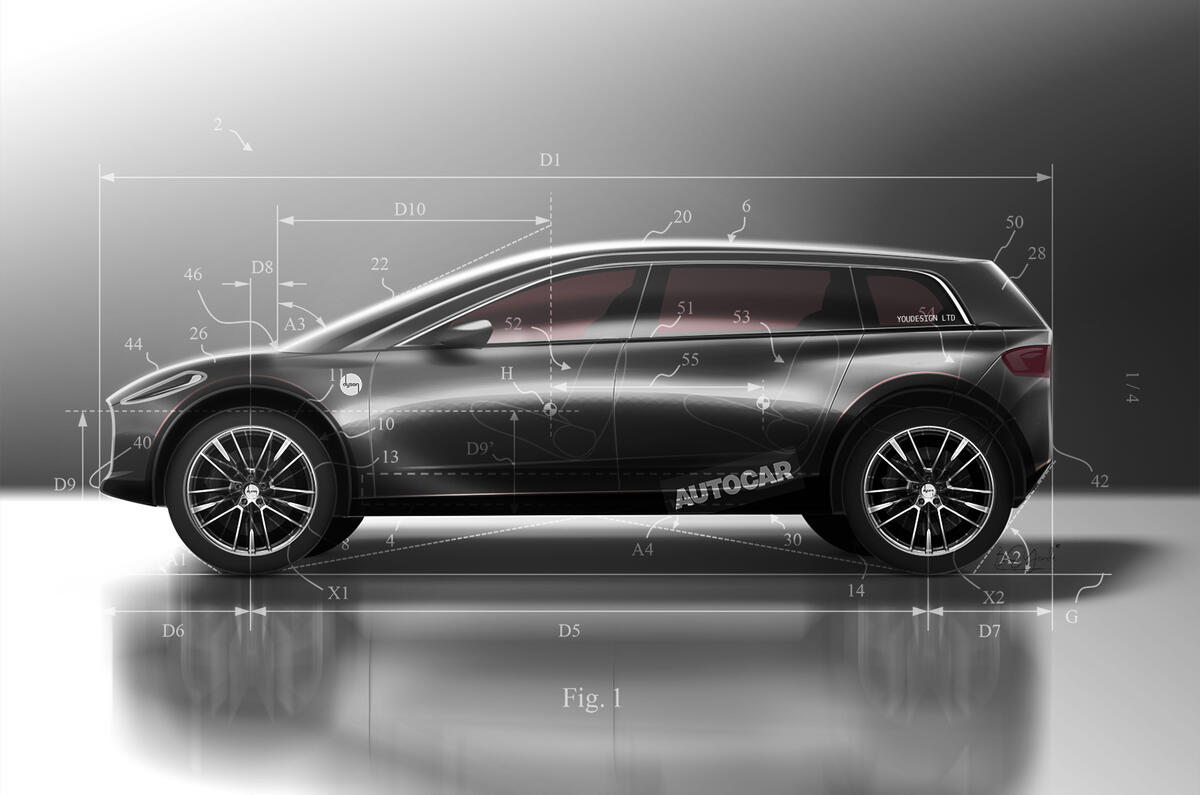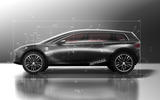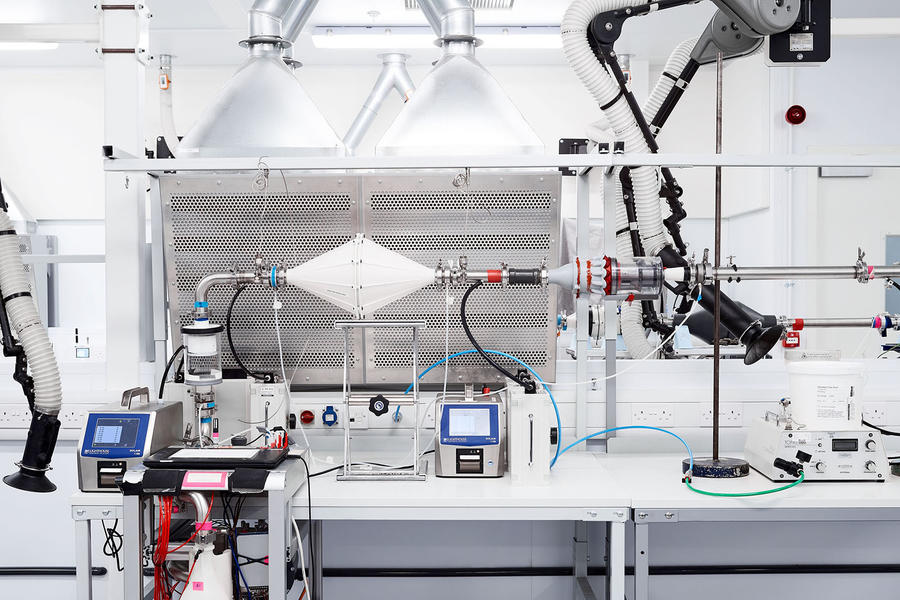Dyson’s electric car, due to arrive in 2021, is likely to be a long, sleek crossover-style premium saloon that will have roughly the same footprint as a Range Rover but with completely different proportions from the classic British 4x4 – and every other production car on the road.
Key details of billionaire inventor James Dyson's thinking on electric vehicles have dramatically emerged from three patent applications made public today. They cover the car’s ultra-long wheelbase, unique 'crossover' body, unprecedentedly large and thin wheels, short body overhangs and unusually 'fast' windscreen.
As a caveat, though, Dyson’s famously secretive people emphasise that their images – and therefore ours – don’t necessarily show exactly what their car will look like, only some design and engineering devices likely to be used by it.
James Dyson: why we're building an electric car
The Dyson car, whose long-rumoured existence was confirmed late in 2017 when the inventor revealed plans to spend £2.5 billion of his own money on it, has been taking shape for the past two years. Work has been led by former Aston Martin chief engineer Ian Minards, who joined Dyson in September 2016 as vice president, automotive.
The new Dyson patents show nothing less than a complete rethink of big-car design and engineering conventions for the fast-approaching electric age. The refinements are aimed at delivering low weight and low aerodynamic drag to maximise performance and battery range while providing generous cabin space and first-class ride comfort, a particular Dyson priority.

Autocar spoke exclusively this week to company founder Sir James Dyson at his base in Singapore, where electric cars will ultimately be manufactured after an initial batch is built at the company’s £200 million automotive HQ currently under construction in Wiltshire.


























Join the debate
Add your comment
Limited appeal
Not an inspiring design, and can only appeal to those who are prepared to spend a stupid amount on a car, ideally with a huge family to use all the seats and a small and agile driver to squeeze in under that steeply raked windscreen.
If, like me, the driver is anywhere over about 5ft 10in tall, middle-aged or beyond, no longer carting umpteen kids around and with some slight difficulty in contorting to get into modern cars with their obsession for streamlining via steeply raked windscreens, low rooflines and constricted doorways, then this is certainly not for you - even allowing that all the other so-called features may just possibly be positives.
Dyson, as ever, has gone off into his own dream world and will produce yet another overpriced novelty invention that the world does not need. Now a really efficient small(er) electric car, affordable for the masses - well that would be a good idea, wouldn't it? Have a think, James. Just who are you doing this for - eh?
They said this about.....?
Elon Musk.?, heard the name, well he to was looked on like Dyson, but, not being a fan of the man Elon Musk,but, he has shaken up the Car industry globally, Dyson on the other try’s in his posh accent to make you believe he makes the best Hoover in the World ( read dearest), this Dyson Car idea I’m not sure, a hard sell, not out there enough, so, stand back and let’s see it, yes, let’s see it?
What do you expect?
Jetsons or Dyson?, judging by some of the posts a lot of you have nothing good to say about the Dyson concept Car, almost that you expected more, better, be better than Tesla, what if he succeeds?, the way some of you raise your metaphorical Eye brows your expecting Dyson to come up with the flying Car..!
Yeah, thought so;
you can say anything you like as long as it isn't critical, in this case of dyson, who is a massive b e l l e n d.
aevgaevla;kwndwvc'\lk l|s
WDCKJ wdkjkcb WSJKD C
K jdckSDJ